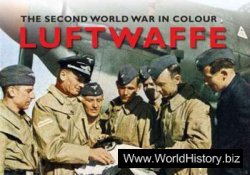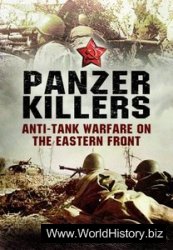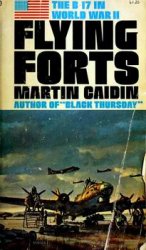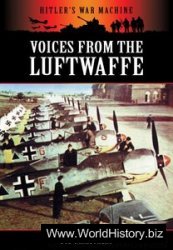Hauck, Lt Gen Friedrich-Wilhelm (1897-1979). Ger. Commander 305th Division in the Italian campaign until he became Acting Commander LXXVI Panzer Corps in November 1944, and then Commander LI Mountain Corps in March 1945.
Hausser, Col Gen (Obergruppen-fuhrer, SS) Paul (1880-1972). Ger. A World-War-1 veteran, Hausser retired from the Reichs-wehr as a Lt Gen in 1932. He soon joined the SS Verfiigungstruppe, playing a major part, under Himmler, in its development in 193439 into the Waffen SS. He commanded “Das Reich” Division in France, 1940, and II SS Panzer Corps on the Eastern Front, transferring with it to the West following the Normandy invasion. On June 28 1944 he became commander of Seventh Army, bitterly contesting the Allies’ Normandy breakout. From early 1945 he commanded Army Group G in its final resistance on the Rhine and in the Ruhr. RO’N.
Havoc see boston.
Haw-Haw, Lord see joyce, william.
Hawker, Maj Lanoe George VC
(1890-1916). Br. A reconnaissance and bomber pilot in 1914-15, Hawker took command of 24 Squadron, the first British unit in France (from February 27 1916) equipped with single-seat fighters (DH 2). He was awarded the vc after vanquishing three German aircraft in single combat on July 25 1915. On November 23 1916, he was shot down and killed by Manfred von Richthofen.
Hawksworth, Lt Gen Sir John “Ginger” (1893-1945). Br. Commander 46th Division in the Italian campaign; promoted to command X Corps in November 1944. Sent to Greece by Alexander in December 1944 to establish “Military Command Athens” with the task of clearing the communist forces from Athens. He died soon after successfully accomplishing his task.
Heartbreak Ridge, Battle of
(1951). Heartbreak Ridge lay in the east/central sector of the Korean front, adjacent to Bloody Ridge. On September 13 1951 it was attacked by US infantry and a French battalion. The nkpa resisted fiercely. During the battle, US artillery fired 229,724 supporting rounds and the fighting was often hand to hand. The struggle for Heartbreak Ridge lasted until October 15 when the feature was outflanked and taken. The nkpa suffered 35,000 casualties and the US Army 5,600.
Hebuterne. Village, near Gomme-court, forming the boundary between the British Third and Fourth Armies, July 1 1916.
Hedgehog (anti-submarine weapon). Multiple mortar throwing pattern of contact-fused bombs ahead of ship. In service 1943.
Heidrich, Lt Gen (General der Fallschirmtruppen) Richard
(1896-1947). Ger. Commander 1st Parachute Division during the Italian campaign until November 1944 when he took over I Parachute Corps, and won fame as the defender of Cassino in the Third and Fourth Battles.
Heikoutai, Battle of see sandepu.
Heinkel He 111 (German, WWII). Bomber; crew 5. Prototype flew February 24 1935; deliveries early production He lllB-1 began winter 1936-37. Initially four sent to Spain for operational evaluation January 1937; others followed for Condor Legion. Design developed and revised through many versions; deliveries basic He lllP started spring 1939; by September adoption He lllP/lllH virtually complete. Widely used various tasks, latterly as transport and glider tug, until war’s end. Production: over 7,300. Two l,020hp Daimler-Benz DB601Aa/l,350hp Junkers Jumo 211F-2 engines; max. speed 252mph (406kph); 7,1651b (3,250kg) bombs, one
20mm cannon, one 13mm and up to five 7.9mm machine guns.
Heinkel He 177 Greif (Griffin)
(German, WWII). Heavy bomber, crew 5, to Luftwaffe specification of mid-1936. Prototype flew
November 19 1939; evaluation batch of 35 underwent many modifications, suffered many problems, especially in power installation. Production halted 1942 but resumed; finally terminated October 1944; total built 1,094; about 200 used operationally. Some, with He 293 missiles, used for antishipping strikes. Two 2,700hp Daimler-Benz DB606 (double DB601) or 2,950hp DB 610 (double DB605) engines; max. speed 336mph (540kph); 13,2301b
(6,000kg) bombs/three torpedoes/ two Hs 293 or Fritz X missiles; two 20mm cannon, three 7.9mm and two 13mm machine guns.
Heinkel He 219 Uhu (Owl) (German, WWII). Night fighter; crew 2. Prototype flew November 15 1942; eleven pre-series He 219s delivered by end 1943; further deliveries retarded by engine problems. Although Germany’s best night fighter, its production on scale warranted by its quality and capability was frustrated by intrigue. Production 268. Two l,800hp Daimler-Benz DB 603E engines; max. speed 363mph (584kph); two 30mm and four 20mm cannon.
Heinrici, Col Gen Gotthard
(1886-1971). Ger. Came to prominence as an expert defensive tactician on the Eastern Front during World War II. He commanded the German XLIII Corps in 1941 and led the Fourth Army from January 1942 until August 1944, when he was appointed to the First Panzer Army. On March 20 1945 he replaced Himmler as commander of Army Group Vistula, with a key role in the defence of Berlin. Although he conducted a skilful defensive battle, he was removed from command on April 28 for withdrawing without Hitler’s authority and refusing to mount hopeless counterattacks. PJS.
Hejaz. A region of the Arabian peninsula bordering the Red Sea. In 1916 its ruler, Hussein-ibn-Ali, declared its independence from Turkish rule.
Hejaz railway. Before the outbreak of World War I, Germany extended its influence in the Middle East by assisting the Ottoman empire in building a network of railways. One line stretched into the Hejaz




 World History
World History









